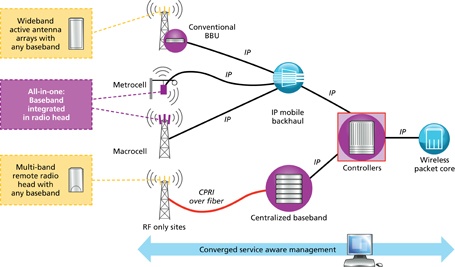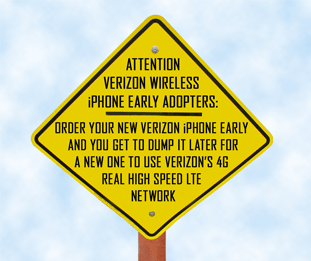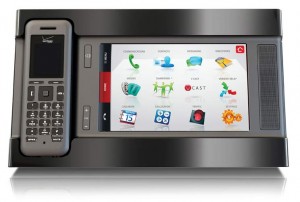Okay, it sounds wild, but let’s look at this for a bit…
Sprint has committed $15B to Apple in connection with securing rights to market the iPhone to Sprint’s subscribers (let’s not talk about the newest Apple product, the iHeatingPad). That’s a lot of cash, and I’ll bet that Apple’s contract leave virtually no room for Sprint to get out from under the weight of an 800 pound Apple.
At the same time, the $9B Sprint was expecting from LightSquared seems to drifted away. This raises very serious questions about the future of Sprint’s touted Network Vision upgrade. As a result, Sprint’s plans to shutter some 30,000 cell sites, relying on the Network Vision project to make it possible…must have dropped to ‘maybe’ status, too.
Clearwire. That word has turned into a blackhole of cash for Sprint, and Google just helped further devalue Sprint’s, ah, majority investment by dumping the Google-held shares at a 90% write off. WiMax is not Sprint’s path forward–LTE is. Clearwire may be too late to Sprint’s party.
Sprint’s Board of Directors last month vetoed Dan Hesse’s plan to buy MetroPCS (for a 30% premium, no less). That puts Dan Hesse’s future outlook at Sprint at a 30% deficit (others say that number is even worse). Will there be new blood on the head of the pin, much less new confusions over the direction the pin is pointing? Hey, how about T-Mobile buying MetroPCS?
This month, Sprint seems to have tried…and failed…to get a network sharing agreement with T-Mobile, according to the Wall Street Journal. I guess that shots a hole in my idea about a SprinT-Mobile merger.
Let’s not forget the grandest of Sprint’s Grand Experiments: Nextel. Oh, you want to forget about that? Likely Sprint does, too.
With research firm Sanford Bernstein dropping its rating on Sprint, citing that Sprint might visit BK land, the Bad News Band keeps marching on. For a thoughtful look at this particular issue, see the SeekingAlpha story of March 20th by clicking here.
Now let’s consider Apple.
Apple has attained the status of a ‘mythical creature’ that can seemingly devour all that blocks it path.
Apple has been fanatical about controlling, to the n-th degree, every element of its users experiences with all of the Apple devices. It controls the look and feel of the user experience, and via the App Store all of the applications on iPhones that have not been subject to a jailbreak, as well as iPads of various operating temperatures.
It must peeve Apple that it decided to confine its iPhone and iPad devices originally on an exclusive basis to AT&T to run on that carrier’s less-than-robust and less-than-adequate-capacity network, and one that actually gave up spectrum in the failed T-Mobile love affair.
Now, at least, Verizon subscribers have a better chance at being able to enjoy close to 3G speeds with their iSomethings.
Oh, yes, there’s that cash reserve thing for Apple. It’s sitting on more cash than the U.S. Treasury, and since last Summer it has been the most valuable company you’ll find in the U.S., and maybe anywhere in the entire galaxy.
If Apple thinks about it, it can have its cake and eat it, too: Buy Sprint, fund and complete Network Vision, deploy 4G at real 4G speed, and dump all of the Sprint phones save for Apple iSomethings. Using the software defined radios of Network Vision, Apple can actually build a wireless network that is optimized for data (but still including the voice app that defines LTE). Siri may be the first step to Skynet, albeit with a programmed sense of humor. (How much wood can a woodchuck chuck? See here.)
For Apple, a Sprint purchase would yield it monthly cash flow that can be put back into expanding and optimizing the “Apple Wireless” Network Vision. And given Sprint’s majority ownership in Clearwire (and the 106ish MHz Clearwire controls in the U.S.), Apple would have a real playground to expand data capacity and speeds.
Maybe Apple might make apply the principles of the iTunes Store to Sprint to shift the marketing of Sprint services to the faceless online monolith. Buy a phone and activate service online. Forget about pins dropping.
It just seems right for Apple to continue its quest to control everything its users see and do with the iSomethings now and in the future by controlling its own data delivery network. At the same time, it can keep feeding iSomethings to Verizon, AT&T, and any other carrier that can’t afford to be left in Apple’s iDust.
With the passing of Steve Jobs, the direct minutia-level control he seemed to exert on Apple (at least according to Isaacson) has also passed. This may free up the current management of Apple to take the leap (no, not Leap Wireless) to controlling even more of the user experience, but from a new distance, all without asking “WWSD?”
Of course, Apple might buy T-Mobile instead–or as well–and do more or less the same thing, but that’s a thought best left for a future post.



 This move make sense from a bandwidth perspective since the video download will occur via the customer’s broadband connection required by the HUB, rather than across the Verizon Wireless network.
This move make sense from a bandwidth perspective since the video download will occur via the customer’s broadband connection required by the HUB, rather than across the Verizon Wireless network.